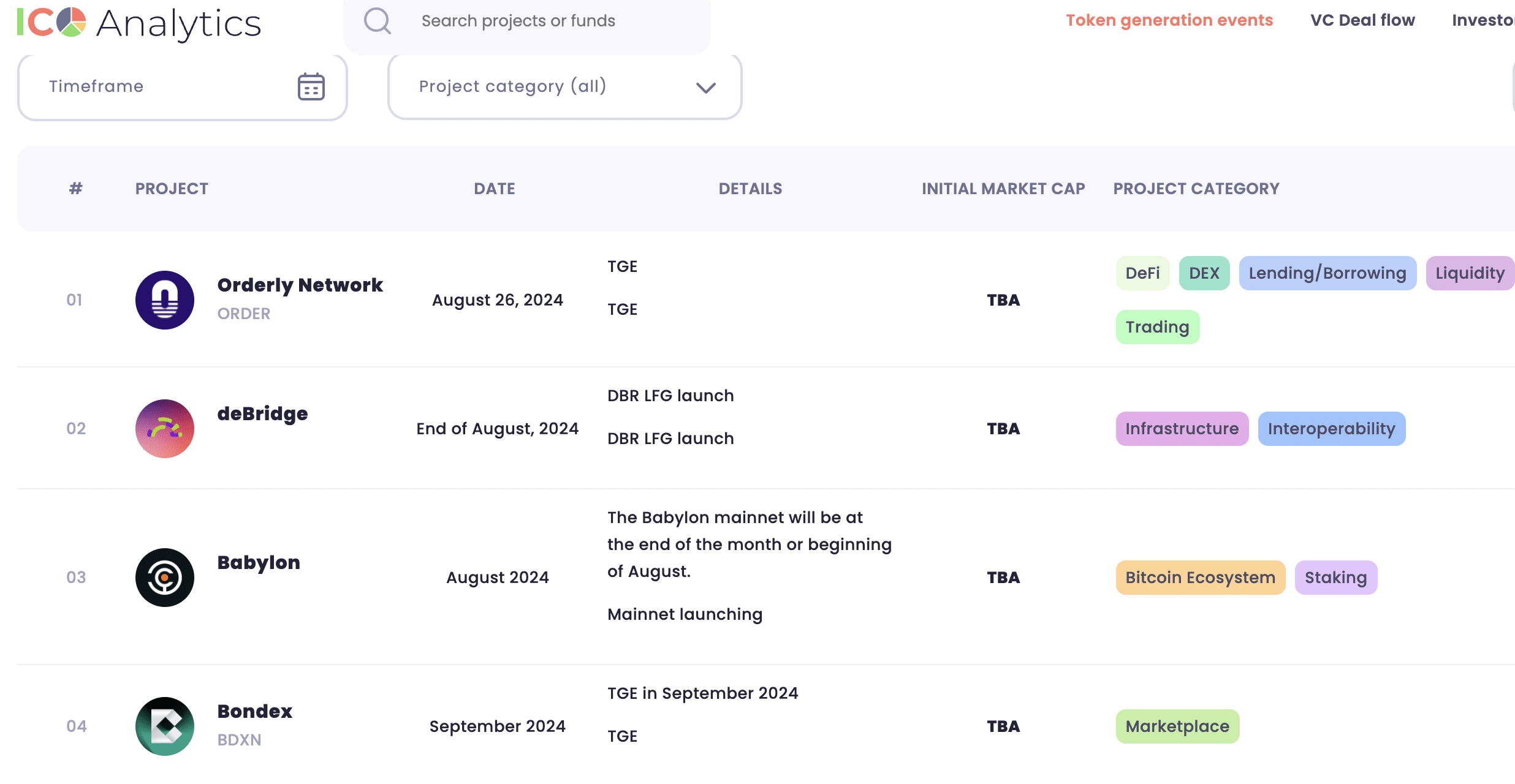In the crypto industry, there are many unfamiliar terms that newcomers often need to look up. While the term ‘initial coin offering’ is widely known, the ‘token generation event’ is mentioned less frequently, even though the concepts are somewhat similar. So, what exactly is a TGE in crypto, why is it important, and how does it work?
Token generation event explained: meaning of TGE in crypto
A TGE means the moment when a project’s digital tokens become available for purchase, letting early investors get in on the ground floor and support the project from the start. The money raised during the TGE helps fund the project’s future development.
TGEs are usually held to launch utility tokens. These tokens are basically your ticket to getting things done on a blockchain platform. For instance, you can use them to pay for transaction fees or to unlock extra features and tools that the platform has to offer.
How TGE affects market dynamics
When a TGE happens, the initial number of tokens available can really impact their price from the start. If the token supply is well-managed, it can help keep prices stable and avoid inflation. But if too many tokens flood the market all at once, the price might drop quickly. It’s also crucial that tokens allocated to the team, advisors, and early investors are locked up and released gradually. This approach keeps the market honest and makes sure everyone stays on board with the project for the long run.
For example, imagine a project with a total of 100 million tokens, where they make 1 million available during the TGE. If there’s a lot of interest and the tokens sell out quickly, the price is likely to go up. But if too many tokens hit the market at once, or if big holders like team members suddenly sell off their tokens, the price could drop.
TGE and ICO: key differences
Although token generation events and initial coin offerings are often used interchangeably, they actually have some key differences that set them apart. Understanding these differences is crucial for both investors and project developers.
ICO: Primarily used to raise funds before the project is fully developed.
TGE: Marks the official release and availability of tokens for trading and use.
ICO: Usually conducted early in the project’s lifecycle.
TGE: Occurs after fundraising phases, when tokens are ready to enter the market.
ICO: Centers on investment and fundraising.
TGE: Focuses on token distribution and enabling use within the project’s ecosystem.
ICO: Higher risk, as it often involves investing in a project that is not yet fully operational.
TGE: Lower risk in terms of project maturity, as it signifies that the project is further along.
In summary, while both TGEs and ICOs involve issuing tokens, TGEs tend to be part of a larger strategy aimed at fostering a thriving project ecosystem, whereas ICOs are more about securing immediate funding.
Advantages of TGE
TGEs offer several key benefits for blockchain projects, making them a popular choice. Beyond just raising funds, TGEs support decentralization, help build strong communities, and ensure regulatory compliance.
At their core, blockchains thrive on decentralization, and TGEs play a big role in this by distributing tokens widely. This approach keeps control spread out, so no single group can dominate. This balance helps maintain the network’s security and stability.
Decentralized projects rely on the collective efforts of many, not just a single organization. This teamwork fuels innovation and long-term success. One major advantage of TGEs is their ability to build and engage a community. Unlike traditional fundraising, TGEs focus on involving people from the start. By offering tokens to early supporters, projects can create a loyal user base that’s invested in the project’s success. An engaged community can boost a token’s value and the project’s impact.
TGEs also help with regulatory compliance, reducing legal risks and smoothing the launch process. By focusing on how tokens are distributed and used, TGEs better align with regulations, which builds trust with both regulators and investors.
Token generation events 2024
According to ICO Analytics, the following TGEs are expected soon in 2024:
- Orderly Network (ORDER) on August 26.
- Bondex (BDXN) in September.

FAQs
What is TGE?
TGE is when a project releases its digital tokens to the public for the first time. This gives early investors a chance to buy in and support the project right from the start. Usually, TGEs are about launching utility tokens, which act as access passes for various features on a blockchain platform. You might use these tokens to pay for transaction fees or unlock special tools and services. Essentially, they’re key to making the most out of what the platform has to offer.
What is the difference between TGE and ICO?
ICOs are primarily used to raise money for a project before it’s fully finished. They’re an early-stage investment opportunity. TGEs, however, occur when the project is further along and ready to release tokens for public use. TGEs focus on the distribution and functionality of tokens within the project, while ICOs are about getting the initial funding to help develop the project.
How to decide if you should participate in a specific TGE?
To decide if a TGE is worth participating in, research the project’s fundamentals. Evaluate the team’s experience, the project’s roadmap, and the utility of the tokens being offered. Check if the project has a clear vision and a solid development plan. Review the tokenomics to understand the supply and distribution strategy. Additionally, assess community feedback and regulatory compliance. Ensure the project aligns with your investment goals and risk tolerance before committing.




